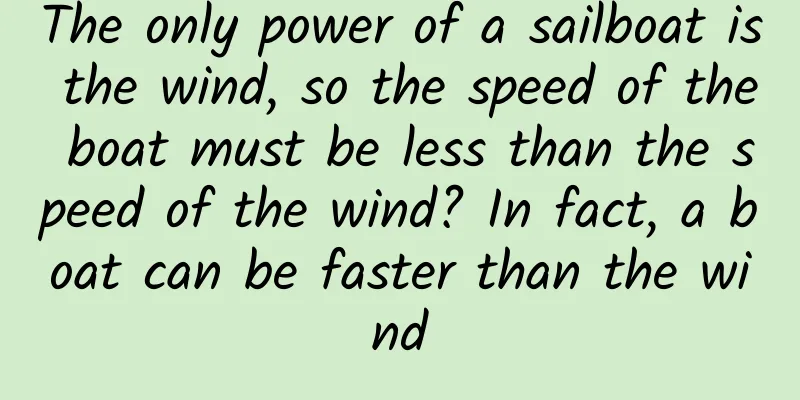Why does Chang'e-5 adopt a "relay" method for sample return?

|
By December 2021, the Chang'e-5 sample return mission of my country's lunar exploration project will have been successfully implemented for one year. The Chang'e-5 probe consists of an orbiter, a lander, an ascender and a returner. This team is like a relay team, sending lunar samples back to Earth through a "relay" method. Schematic diagram of the Chang'e 5 probe So, why not send one member to complete the "treasure hunting" mission alone? This is because the sampling return task is complex and cannot be completed by one member alone. Team members have clear division of labor and each has their own tasks: Orbiter The orbiter is responsible for "flying there", that is, after separating from the carrier rocket, it is responsible for sending the lander, ascender and returner to the lunar orbit. After completing the sampling mission, it will send the returner back to the vicinity of the earth. Lander The lander is responsible for "going down", that is, after reaching the lunar orbit and separating from the orbiter-returner combination (referred to as "orbiter-returner combination"), it is responsible for carrying the ascender to a soft landing on the lunar surface, and together with the ascender, complete lunar surface sampling. Ascender The ascender is responsible for "getting up", that is, after completing the sampling mission, it takes off from the lunar surface with the lunar samples, rendezvous and docks with the orbiter-returner combination flying in the lunar orbit, and transfers the lunar samples to the returner. Returner The returner is responsible for "landing", that is, when the orbiter-returner combination returns to the vicinity of the earth, it separates from the orbiter, re-enters the atmosphere, and sends the lunar samples back to Earth. First of all, the role of the orbiter is equivalent to a space shuttle, which plays the role of round-trip transportation between the earth and the moon. Due to the long distance between the earth and the moon, it is necessary to change orbits many times during the flight. When it reaches the vicinity of the moon, it is necessary to brake and slow down so that it can be captured by the moon; after "getting" the lunar samples, it accelerates to get rid of the moon's gravity and fly back to the earth. These tasks require the orbiter's engine and control system to complete. The returner has no engine and does not rely on the orbiter for ferrying, so it cannot complete the round-trip mission between the earth and the moon. Secondly, since the moon has no atmosphere, landing on the lunar surface from lunar orbit can only be achieved through engine reverse thrust, generating braking force, and reducing the speed of the lander to achieve a soft landing. The returner has no engine and cannot achieve a soft landing; although the orbiter has an engine, the orbiter-returner combination has a large mass of about 4.5 tons, and landing on the lunar surface and taking off from the lunar surface both consume a lot of propellant, and the orbiter also has the task of sending the returner back to Earth. Therefore, after reaching the lunar orbit, the orbiter-returner combination will fly around the moon without consuming propellant, while the lander and ascender (referred to as the "landing and ascending combination") will land on the lunar surface to complete the sampling mission. Schematic diagram of the landing assembly on the lunar surface Third, after completing the sampling mission, it is necessary to take off from the lunar surface. The weight of the lander is nearly 3 tons, and taking off from the lunar surface requires a lot of propellant. In order to reduce the takeoff weight and reduce the consumption of propellant, it is necessary to leave the lander that has completed the mission on the lunar surface to serve as the takeoff platform of the ascender, and the ascender weighing about 0.8 tons will take off from the lunar surface and transfer the lunar samples to the returner by rendezvous and docking with the orbiter-returner assembly remaining in the lunar orbit. Schematic diagram of the ascender flying away from the lunar surface Ascender and return assembly Schematic diagram of rendezvous and docking in lunar orbit Finally, in order to send lunar samples back to Earth, it is necessary to re-enter the atmosphere. Since the returner flies at a very high speed, friction with the atmosphere will generate a lot of heat. If heat protection measures are not taken in the shape design and material selection, the returner will burn up during the re-entry process. Only returners with heat protection design can safely re-enter the atmosphere. At the same time, due to their small mass (about 0.3 tons), they can be decelerated by parachutes and land smoothly on the ground. Orbiters and ascenders without heat protection design do not have the conditions to re-enter the atmosphere. The returner returns to the ground with lunar samples After 23 days of operation by the Chang'e-5 lunar sampling team, only the returner returned to the ground with lunar samples; the lander, which completed the mission, remained on the lunar surface; after the ascender handed over the lunar samples and separated from the orbiter-returner combination, it was controlled to leave orbit in accordance with ground commands and landed at the predetermined landing point on the moon; and after completing the round-trip transportation mission between the Earth and the Moon, the orbiter was given a new mission. It first explored the Sun-Earth Lagrange L1 point, and then returned to the moon from the Sun-Earth Lagrange L1 point. As of the first anniversary of the lunar sampling, it was still operating in the lunar orbit. Source/"Space Exploration" 2022 Issue 1 Text/Zhang Tiejun Editor/Yang Sishuang Review/Yang Jie Producer/Xu Chunmei China Aerospace Science Popularization |
>>: What? Not only is there no New Year's Eve this year, but even the Nian beast is gone?
Recommend
Is it really enough for Tencent to position itself as an assistant in the smart car industry?
At the Tencent 2018 Global Partner Conference hel...
This "lotus leaf" is not actually a plant!
Speaking of "ceramics", there is no dou...
Cash loan product operation routines and operation system construction!
Recently, I was tasked to study the product opera...
Douyin account or video account, which one is easier to become popular?
Throughout February, I was busy operating my two ...
iOS 18 is about to be released, get to know the new features first
The May Day holiday is approaching, which means i...
WeChat Mini Programs to attract traffic and promote, how to promote WeChat Mini Programs to attract traffic?
It is becoming increasingly difficult to do physi...
How to improve product user stickiness?
Recently, more and more customers have been askin...
Using Flink as an example to dispel six common myths about stream processing
We spend a lot of time thinking about stream proc...
Don’t rush to “take action” even if you are “inspired”. Patients with heart disease should be cautious when traveling during the short holiday.
Written by Shi Shutian (Deputy Chief Physician, D...
China's greatest connection! How many secrets does the Yangtze River hide?
On Earth There has never been such a river With s...
How do scientists know the age of fossils and the age of the Earth? Thanks to a revolutionary invention
Before the use of physical and chemical methods t...
APP promotion丨Analysis of the advantages and disadvantages of mainstream promotion channels
01 Classification by traffic rating The editor di...
What kind of WeChat communication chain is worth using hidden behind Chunyu’s “closure”?
[[153300]] This is the case with the recent "...
This is how awesome operations handle problems!
In the current environment, we call people who ha...
The Future of Smart TVs from the Fight Between Xiaomi and LeTV
The war between Xiaomi and LeTV has been going on...









